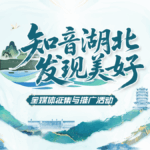Rivers flow vigorously, nourishing fertile land, while ocean waves stretch endlessly to the horizon. Located at the lower reaches of the Haihe River, Tianjin serves as a crucial node in the Haihe water system, boasting a 153-kilometer coastline. Historically, the Haihe River was a hub for canal transport, connecting northern and southern economies. In modern times, Tianjin Port has emerged as a vital northern harbor, blending the dual advantages of river navigation and maritime trade, forming a unique river-sea culture. From its millennia-old roots as a “city born of rivers” to its contemporary leap toward “prosperity through the sea,” Tianjin’s story of harmonious coexistence between civilization and nature offers a Chinese model for the world.
The key to urban renewal lies in the cultural fabric woven by the convergence of rivers and seas. Tianjin’s transformation is never just about spatial reconstruction but about revitalizing historical memories through river-sea culture. Strolling along the Five Great Avenues, colonial-era buildings shed their past and become cultural landmarks narrating the city’s evolution. In the Cotton Mill Creative Park, rusted machinery contrasts with avant-garde art installations, highlighting the industrial heritage against the backdrop of river-sea charm. This “renewal through tradition” approach shines in intangible cultural heritage: Yangliuqing New Year painting artisans blend canal motifs into scarf designs, bringing traditional craftsmanship into modern life; comedians infuse local humor into community interactions, easing neighborhood tensions with laughter. Just as rivers and seas embrace every tributary, Tianjin’s open and inclusive cultural ethos allows history and modernity to merge seamlessly in its streets.
Modernization is never a break from tradition but a balance of preservation and innovation guided by river-sea wisdom. Leveraging its position along the Bohai Bay, Tianjin is building a world-class port while advancing green transitions in coastal industries, turning the marine economy into a sustainable engine for high-quality development. In restoring the Haihe River, ecological projects like dredging and wetland rehabilitation coexist with preserving cultural relics such as ancient docks, ensuring the “mother river” reflects both clear waters and historical memories. This development philosophy embodies the dialectics of river-sea culture: “embracing the sea” is not about conquering nature but harnessing its potential, while “protecting the river” is not a constraint on progress but a commitment to harmony with natural laws. As old factories along the Haihe embrace digital innovation and an aircraft carrier theme park uses AR to relive naval history, tradition and modernity find their most beautiful intersection.
The confluence of rivers and seas has also shaped Tianjin’s inclusive cultural character. Here, the tolerance of canal culture meets the pioneering spirit of maritime civilization, both vividly reflected in its red heritage. At the Zhou Enlai and Deng Yingchao Memorial Hall, a patched-up nightgown speaks to the revolutionary frugality, while VR exhibits at the Pingjin Campaign Memorial immerse visitors in the fervor of Tianjin’s liberation. The clash of old and new is equally captivating: in teahouses, veteran comedians improvise routines echoing everyday life, while fishermen-turned-artists in Binhai recreate migratory bird spectacles with acrylic paintings. Innovative cultural practices stand out: Xiqing District integrates martial arts into school exercises, nurturing discipline in youth, and Wuqing District uses paper-cutting to depict socialist values, turning tradition into a medium for modern values. Such “living heritage” not only safeguards cultural roots but also revitalizes them in contemporary contexts.
The leap from “river” to “sea” reflects China’s approach to balancing humanity and nature. Tianjin’s story shows that a city’s vitality lies in staying rooted while embracing the wider world, and that cultural resilience comes from honoring history while shaping the future. This path—from river to sea—may be China’s unique contribution to global urbanization: not a pursuit of uniform skylines, but a dialogue between tradition and modernity where every city finds its rhythm, ensuring civilizations flow like endless rivers and development spreads like boundless waves.





